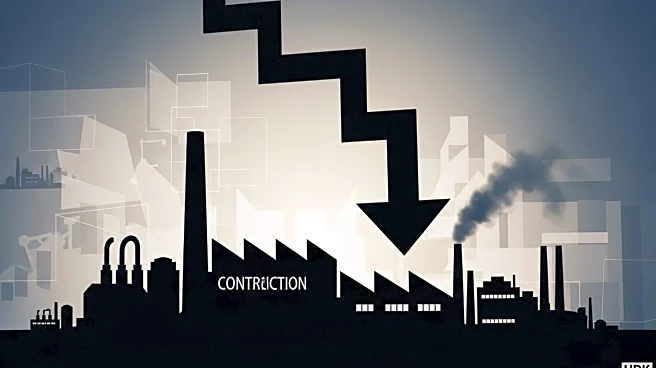What's Happening?
The U.S. manufacturing sector experienced contraction for the seventh consecutive month in September, as reported by the Institute for Supply Management (ISM). The Manufacturing PMI registered 49.1 percent, a slight increase from August's 48.7 percent, indicating ongoing challenges in the sector. Despite a rise in the Production Index to 51 percent, the New Orders Index fell to 48.9 percent, suggesting a decline in demand. The Prices Index remained in expansion territory at 61.9 percent, reflecting persistent inflationary pressures. Employment in the sector showed modest improvement, with the Employment Index rising to 45.3 percent. However, the New Export Orders and Imports indexes both declined, highlighting reduced international trade activity.
Why It's Important?
The continued contraction in the U.S. manufacturing sector signals potential challenges for the broader economy, as manufacturing is a key component of economic growth. Persistent inflationary pressures, as indicated by the Prices Index, could lead to increased costs for manufacturers, affecting profitability and competitiveness. The decline in new orders and exports suggests weakening demand, which may result in reduced production and employment opportunities. This contraction could impact related industries and supply chains, potentially leading to slower economic recovery and growth. Stakeholders, including policymakers and business leaders, may need to address these challenges to support the sector and mitigate broader economic impacts.
What's Next?
The U.S. manufacturing sector may face continued challenges if demand does not recover. Policymakers might consider measures to stimulate demand and support manufacturing growth, such as incentives for innovation and investment in technology. Businesses may need to adapt to changing market conditions by optimizing operations and exploring new markets. Monitoring inflationary pressures and international trade dynamics will be crucial for stakeholders to navigate the evolving economic landscape. The sector's performance in the coming months will be critical in determining the trajectory of the U.S. economy.
Beyond the Headlines
The contraction in manufacturing could have long-term implications for the U.S. economy, including shifts in employment patterns and industrial competitiveness. The sector's struggles may prompt discussions on the need for structural reforms and investments in sustainable manufacturing practices. Additionally, the impact on global supply chains could influence international trade relations and economic policies.











